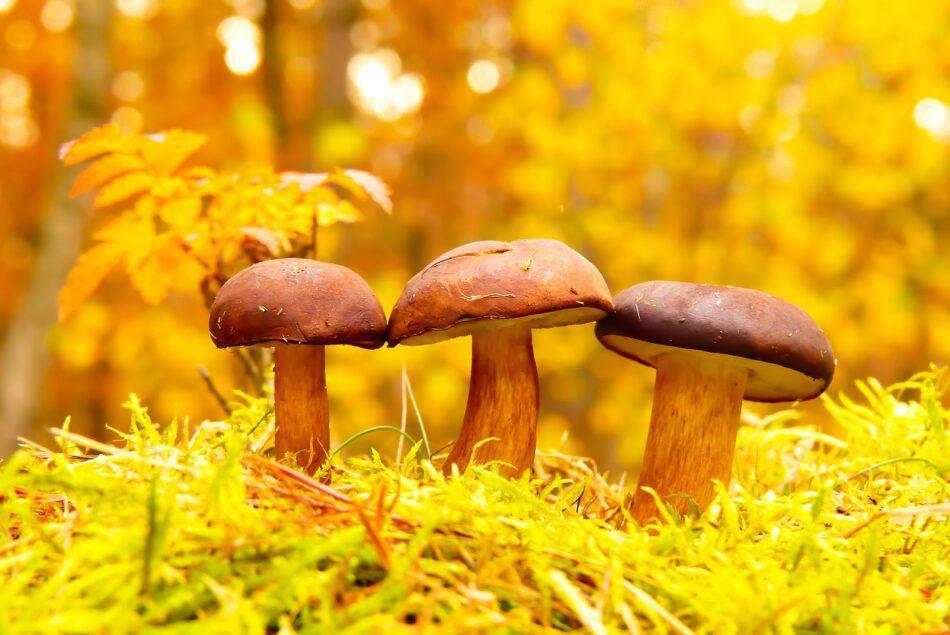Mushrooms are the raw material of the future
There are two groups of fungi: the ascomycetes, which generally occur as unicellular organisms (yeasts) or filamentous (moulds), and the basidiomycetes, which produce large fruiting bodies (mushrooms) mostly associated with plants, forming mycorrhizae.
Source: The Conversation
Its presence in human culture dates back to the mists of time. Since ancient times, forest mushrooms have been used as food and medicine. The snowman, Ötzi, discovered on the Italian-Austrian border, carried, more than 5,000 years ago, dried mushrooms in his luggage as a medicinal support.
In traditional Chinese and Indian medicine, mushrooms play a fundamental role, and species such as Ganoderma lucidum are the basis of important research work in the search for anticancer glycosides.
An alternative use of mushrooms is the one that Agrippina is said to have made of the poisonous mushroom Amanita phalloides to entertain her brother Caligula and, incidentally, clear the imperial path for her son Nero.
The needs of the future
Today, mushrooms are more important than ever. The future of our species requires an urgent ecological transition, a priority objective of the European Union to achieve climate neutrality by 2050. To achieve this, there are important initiatives underway to recover the planet's biodiversity; to transform the current food model into a sustainable system, and to promote the circular economy. Fungi play a crucial role if we want these objectives to be met.
They are the main decomposers of biomass, in addition, they are an alternative protein source for feeding a growing humanity, and they are essential for the stability of forest systems.
For all this, they are, more than ever, in the crosshairs of science.
In the GenMic Genetics, Genomics and Microbiology research group of the Public University of Navarra (UPNA) we have been working for thirty years on molecular biology, genetics and genomics of mushrooms (higher basidiomycetes), to develop applications in these fields.
The most unknown fungi
There are two groups of fungi: the ascomycetes, which generally occur as unicellular organisms (yeasts) or filamentous (molds), and the basidiomycetes, which produce large fruiting bodies (mushrooms). ) mostly associated with plants forming mycorrhizae.

Ascomycetes have been extensively studied, since species as important from a technological point of view as bread, wine and beer yeast (Saccharomyces cerevisiae), the yeast Candida albicans and the filamentous fungus Aspergillus belong to this group. fumigatus, causing, among other things, opportunistic infections in humans.
Benefits of bone broth & 15 delicious ideas for how to use it. https://t.co/2eq0h9Kxzm #bonebroth #health #recipes #viazoi #genetics
— viazoi Fri Apr 12 18:09:43 +0000 2019
In the group of ascomycetes are also the producers of antibiotics, such as penicillin (Penicllium notatum), and cyclosporine (Tolypocladium inflatum) or lovastatin (Aspergillyus terreus), used as medicine against cholesterol.
However, the second group of fungi, the basidiomycetes, are much less well known, and our work group has specialized in them.
In search of new drugs and industrial products
In any forest around us, in autumn or spring, various types of mushrooms can be seen on the ground, or growing on the trunks of trees that reflect a huge network of invisible filaments.
This network is the vegetative biomass formed by mushrooms. In fact, the largest living organism identified on earth is a basidiomycete fungus (Armillaria ostoyae) whose mycelium covers an area of more than 900 hectares in an Oregon forest.
The great variety of forest ecosystems with their diversity of interactions with plants, animals, bacteria and other fungi allows us to suppose that the basidiomycetes of these ecosystems, which appear as a hinge between the plant and animal kingdoms, must produce an unexplored variety of enzymes and secondary metabolites that can enrich the arsenal of drugs and industrial products that we currently have.
One of the lines of work of our group is to identify those enzymes of interest produced by basidiomycetes to produce them and use them in industrial or pharmaceutical applications.
Strapping carbon by imitating fungi
Fungi are, along with animals and plants, the third group of macroscopic organisms in our world. They share their immobility with plants, although, unlike them, they are not capable of photosynthesis, so they must decompose the matter in their environment to feed themselves.
This system for obtaining food makes fungi the main agents that decompose plant biomass, and makes them essential in the carbon cycle in forest environments.
Basidiomycete fungi have played a key role in the geological accumulation of carbon stores in the form of fossil fuels. The appearance of a group of them (the so-called white rot) has even been associated with the end of this accumulation and, therefore, with the end of the Carboniferous period. This reflects the enormous biomass recycling work on the planet, throughout its history, that these fungi have developed.
Our group has collaborated intensively with the Joint Genome Institute of the University of California in basidiomycete genomic and metagenomic sequencing projects. We want to identify new variants of enzymes and processes that allow us to better understand the carbon cycle and develop applications from those fungal enzymes that are involved in it.
Growing milk chanterelles and black truffles
They are a food rich in protein and highly appreciated in gastronomy. However, to this day, many species cannot be cultivated. The boletus (Boletus edulis), the milk cap (Lactarius deliciosus) and the black truffle (Tuber melanosporum) are some examples.
There are other species that have been cultivated, such as the mushroom (Agaricus bisporus), the oyster mushroom (Pleurotus ostreatus), the thistle (P. eryngii), the Shiitake (Lentinula edodes) and many others that are also highly appreciated in the kitchen and the market.
Our group has participated in the development of genetic and molecular tools to improve the cultivation and production of the oyster mushroom. We achieved the sequencing of its genome in an international collaborative project developed at the JGI.
We are now working to understand the complex reproduction of basidiomycetes, and this will allow us to develop strategies for their manipulation and for inducing fruiting in mushroom cultures that until now can only be harvested seasonally.
Biofuels as a future
The oyster mushroom P. ostreatus is a white rot fungus that degrades lignin in wood. By degrading it, it leaves the cellulose accessible to attack by other microorganisms and enzymes.
These enzymes make available for fermentative processes the enormous amount of carbon stored in lignocellulose: the main carbon store on Earth.
This process is of enormous interest for the biological treatment of plant and forest residues that will allow the production of second generation biofuels.
Our group participated in the sequencing of the Serpula lacrymans genome in a project that shed light on the mechanism by which this type of fungus performs its ecological function.
New food and new clothing
To finish, let's look at the future of food and clothing. Fungi can produce new proteins that complement or replace those of animal origin in the form of supplements or as a base to produce alternatives to meat with a greater contribution of fiber and a total absence of cholesterol.
But perhaps a spectacular recent advance has been the use of fungi to produce alternatives to leather in the manufacture of not only accessories (high-end bags, sneakers) but also fashion lines such as the one recently presented by Stella McCartney at Paris based on the use of vegan mushroom leather.




